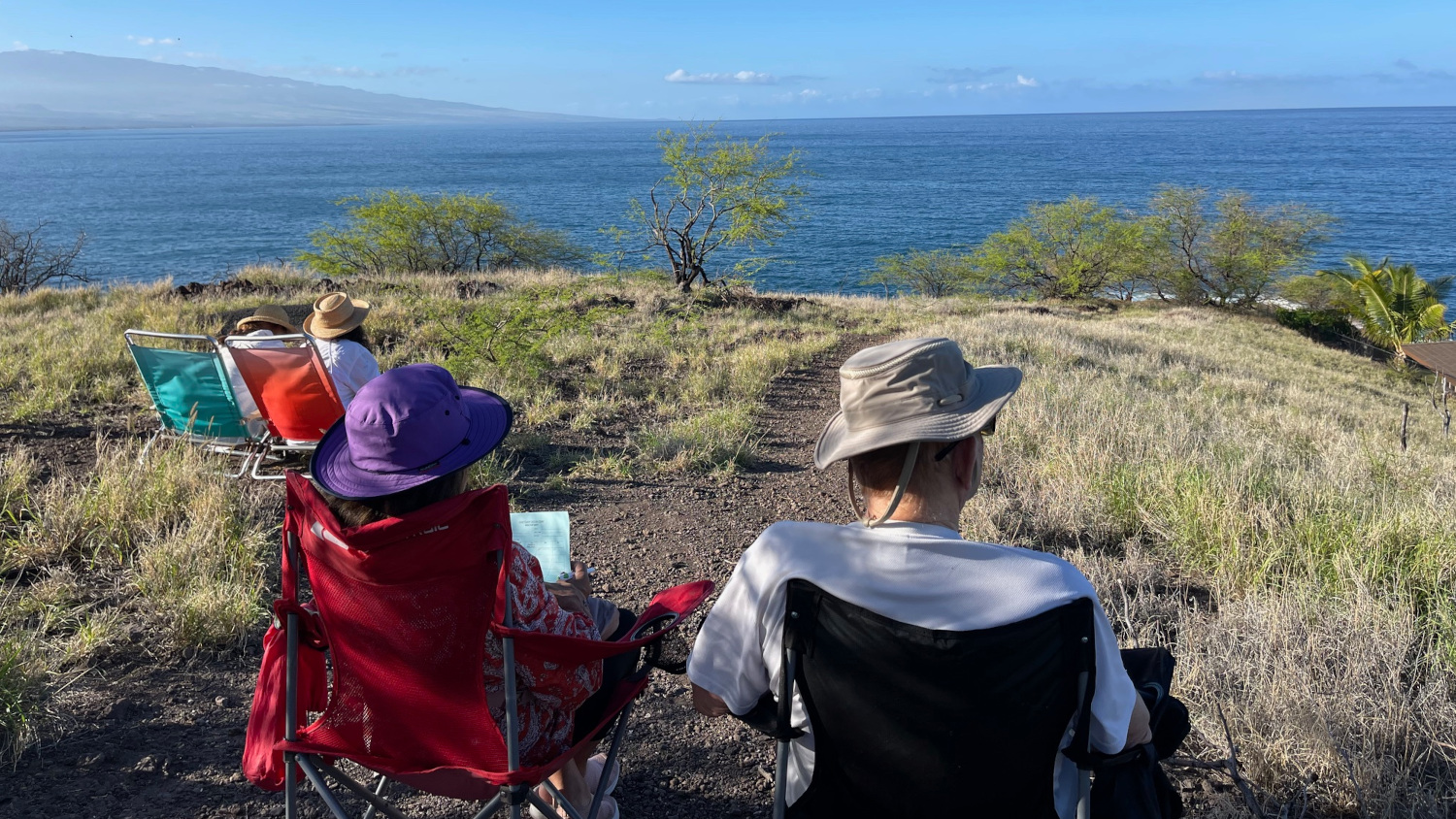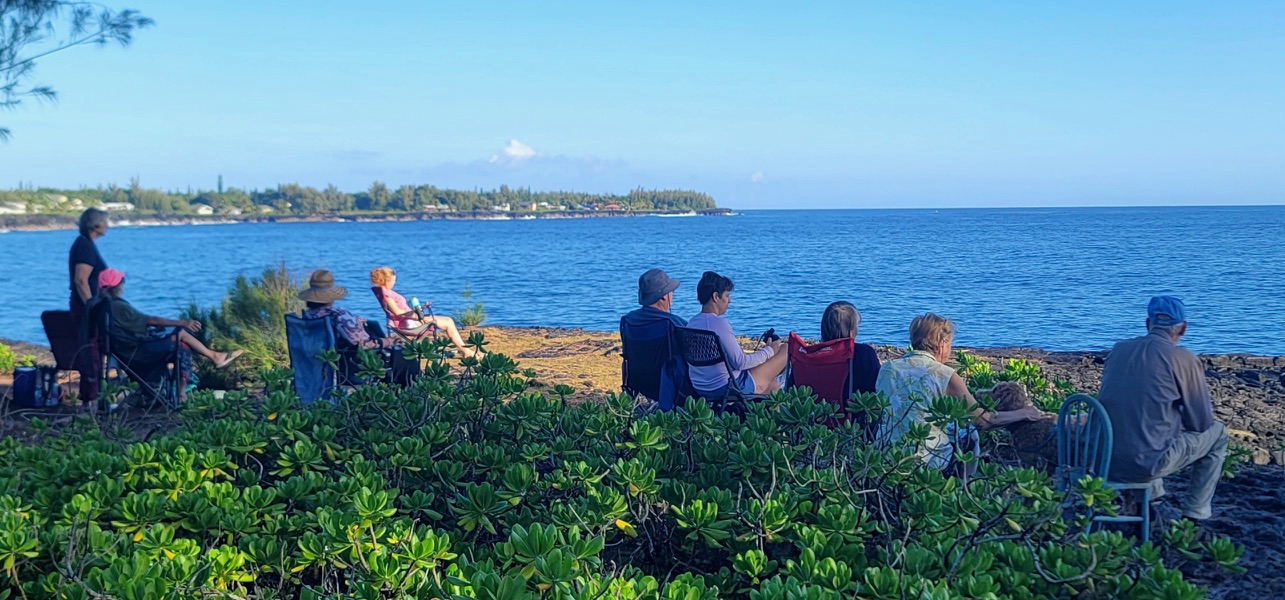(BIVN) – The first Hawaiian Islands Humpback Whale National Marine Sanctuary Ocean Count of the year 2024 was held on Saturday, January 27.
From a report by the NOAA Hawaiian Islands Humpback Whale National Marine Sanctuary:
402 volunteers gathered data from the shores of Kaua‘i, O‘ahu, Molokaʻi and Hawai‘i islands during the Hawaiian Islands Humpback Whale National Marine Sanctuary Ocean Count and from Maui and Lānaʻi during the Great Whale Count by Pacific Whale Foundation, the first of three coordinated whale counts between the two organizations in 2024.
This is the sixth year that both counts are coordinated on the same days, ensuring the data from all the main Hawaiian Islands are collected simultaneously.
Volunteers collected data from 44 sites across all the main Hawaiian Islands on January 27. A total of 315 whales were observed during the 9:00 – 9:15 am time period, the most of any time period throughout the day’s count.
On the islands of Kaua‘i, O‘ahu, Molokaʻi and Hawai‘i, Ocean Count volunteers collected data from 32 sites; a total of 174 whales were observed during the 9:00 – 9:15 am time period, the most of any time period throughout the day’s count.
On Maui and Lānaʻi, Great Whale Count volunteers collected data from 12 sites during 15-minute intervals between 8:30 am and 11:50 am. A total of 141 whales were observed during the 9:00 – 9:15 am time period, the most of any time period throughout the day’s count.
On Kaua‘i, the total number of whales observed during the day’s count was 292, on O‘ahu, the total was 604, on Molokaʻi, the total was 30 and Hawai‘i 324. The total number for the Great Whale Count on Maui was 821, and on Lānaʻi was 53, for a grand total of 2124 throughout the state. This number may represent duplicate sightings of the same whale by different observers or at different time periods or different locations throughout the day.
Data collected during the Sanctuary Ocean Count and Great Whale Count combined with other research efforts can help reveal trends in humpback whale occurrence within and amongst whale seasons.
Across the main Hawaiian Islands, weather conditions were primarily mostly sunny with winds varying from light to moderate throughout the day. Several sites did experience rain and gusty winds which was not ideal for observing whales. A variety of other species were also spotted during the count including honu (green sea turtles), ʻilioholoikauaua (Hawaiian monk seals), naiʻa (spinner dolphins), mālolo (Hawaiian flying fish) and multiple bird species such as aeʻo (Hawaiian stilts), ʻiwa (great frigatebird), mōlī (Laysan albatross), kōlea (Pacific golden plover), Nēnē (Hawaiian goose), and more.
Ocean Count promotes public awareness about humpback whales, Hawaiian Islands Humpback Whale National Marine Sanctuary, and shore-based whale watching opportunities. Site leaders tally humpback whale sightings and document the animals’ surface behavior during the survey, which provides a snapshot of humpback whales’ activity from the shorelines of Kaua‘i, Oʻahu, Molokaʻi and Hawai‘i islands. Ocean Count is supported by the National Marine Sanctuary Foundation.
The Great Whale Count by Pacific Whale Foundation had site leaders count whales from shore as part of a long-term survey of humpback whales in Hawai’i, with 12 survey sites along the shoreline of Maui and a new site on the shoreline of Lānaʻi. This event provides a snapshot of trends in relative abundance of whales and is one of the world’s longest-running community science projects.
Both counts take place three times during peak whale season annually on the last Saturday in January, February, and March.
NOAA says preliminary data on the Sanctuary Ocean Count whale sightings by site location are available at oceancount.org.



by Big Island Video News7:06 am
on at
STORY SUMMARY
HAWAIʻI - A total number of 324 koholā - or humpback whales - were observed during the day’s count on the Island of Hawaiʻi.